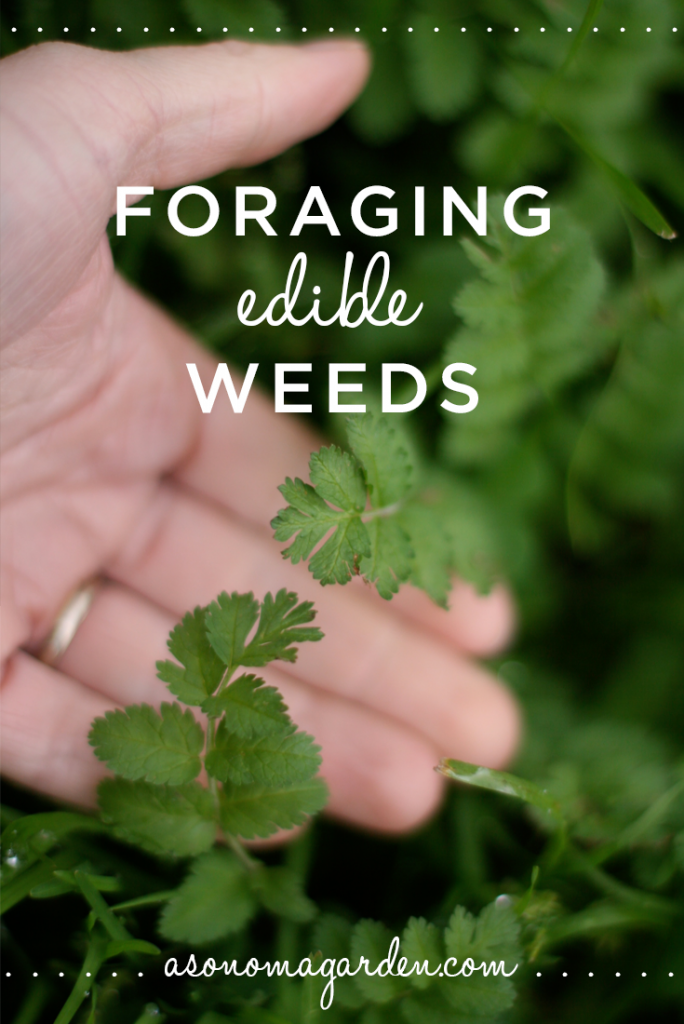 We had a good rain storm in December that brought us some much needed water. And then we had this really freak 80 degree weather in January for about a week. So you can only imagine what that has done to the weeds. They are thriving and ready to take over. So while the far northern half of the country is maybe taking a snowy winters break from working in the garden to admire the many seed catalogs that have been arriving, we have been doing all that we can to avoid being covered alive in weeds. Sometimes it seems like there is no rest here!
We had a good rain storm in December that brought us some much needed water. And then we had this really freak 80 degree weather in January for about a week. So you can only imagine what that has done to the weeds. They are thriving and ready to take over. So while the far northern half of the country is maybe taking a snowy winters break from working in the garden to admire the many seed catalogs that have been arriving, we have been doing all that we can to avoid being covered alive in weeds. Sometimes it seems like there is no rest here!
Many years ago, Scott and I bought a book called Edible and Medicinal Plants of the West. We were inspired to get it after a Labor Day weekend camping trip where we discovered wild huckleberries growing near our campsite. Each morning we had huckleberry pancakes. Ever since we’ve had fun finding new, wild edible plants.
This year we’ve discovered a few more edible weeds in our yard that I’d like to show you.
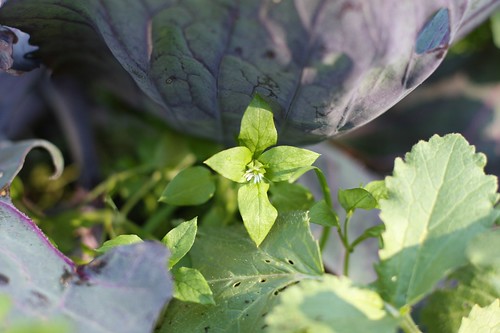
Chickweed is a scrawny stemmed annual weed. It falls over when it gets to tall and reroots at the leave joints….You an only imagine how quickly this spreads! Anyway, its very pretty and delicate looking with a dainty white five petaled flower at the top. Chickweed is easily distinguished by a single row of teeny-tiny little hairs that grow along the stem. At each leaf joint the row of hairs switch sides.
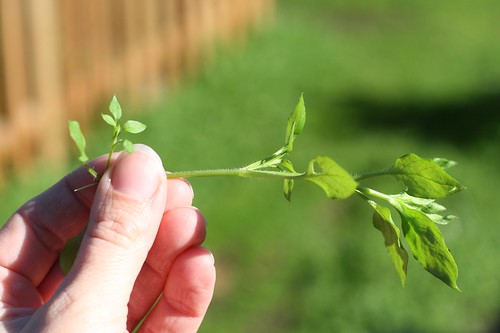
Chickweed is known as one of the tastiest salad greens in existance! Isn’t that bold thing to say? I’ve tried it and it is, in fact, pretty tasty. The entire plant is edible, stems and all and makes a great addition to salads. Which is fortunate because at this point it looks like we could provide all of Sonoma with a weeks supply.
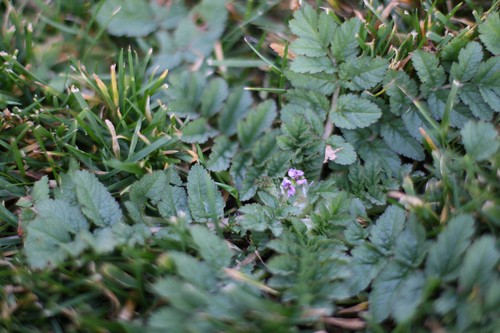
Filaree is another new discovery. We’ve had it growing in our yard all along, but just now identified it. To be honest, it doesn’t look like something you want to eat. It grows right in the middle of our lawn (along with in the veggie garden). As the stems grow they become really hairy. The kind of hairy that you really don’t want to put in your mouth. But luckily you don’t eat the stems, you eat the tender new leaves. Filaree has small five petaled flowers that are a pinkish-purple color.
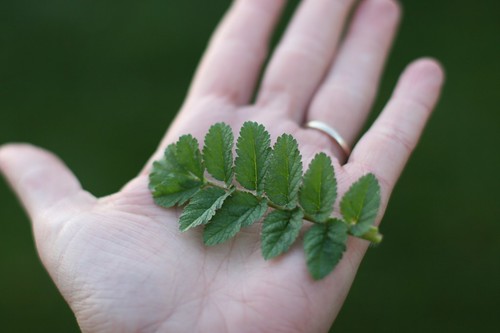
If picked young, the leaves have a parsley like flavor to them which add a nice flavor to salads.
If you like to hike and camp, this is a fun book to have. Even though the title says that it is for the West, it says that at least 50 percent of the plants shown in it appear all over the States and 75% appear from in the northern half the states from California to New England. I’d recommend adding Edible and Medicinal Plants of the West to your collection.


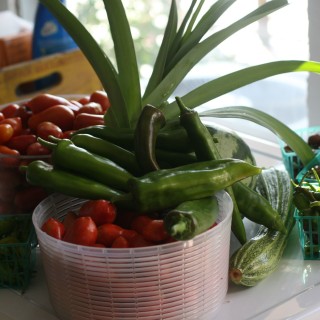





OMG…we have chickweed everywhere!!! And luckily it’s covering the lettuce right now…so I guess I can just pick it all and eat it.
This info will save me a lot of time
Interesting – I’ll have to look for that book. I was surprised to learn that clover is edible. It’s pretty tangy though. Another one that is all over my yard here in NY is purslane – I even cooked some of it this year. Not bad.
I lived along the Aegean coast in Turkey for 3 1/2 years. The Turkish villagers showed me how to make delicious Turkish mezes (greens) out of Filaree, as well as from mallow leaves and stems, nettles, wild turnip greens and a few other weeds I see in Sonoma county. Most of these greens are far more tasty cooked up and then drizzled with a really good olive oil, some lemon juice and fresh minced garlic. These are now my most favorite veggies. We made dolmas from grape leaves and also medicinal teas from clover, mountain oregano and sage. All these plants grow here. I am so excited, I just found a nettles patch and am brewing up a pot of nettles soup.
Wow Linda! What an experience to live in Turkey for so long! So do you just saute the greens? I’d like to try. We are drowning in edible weeds after these rains!
Some greens are best boiled, some sauteed. For the filaree, the villagers cut it (stem and leaves) in tiny (1/8) inch pieces and saute with minced onion. After, it is drizzled with olive oil, fresh lemon juice and fresh minced garlic.
Heartier greens such as wild mustard and turnip greens are chopped up and boiled, then drained and prepared as above.
Do you cook up mallow? The mallow around here looks like the same variety in the Aegean. It is cooked the same way as the filaree, although often has tomato in it. It ended up being my all-time meze favorite.
All these greens are often topped with whole yogurt flavored with garlic and herbs.
I would love to know what other wild greens you are eating. Any nettles? The Turks were convinced they cured cancer.
Thanks so much Linda for the cooking advice! We are excited to try the filaree dish…maybe tonight. We haven’t eaten mallow yet, I don’t think we have that growing in our yard, but I’ll have to keep an eye out for it. Scott actually used to grow nettles and he says that that is his favorite green to eat. Even over spinach, which is saying something.
I was unable to get my nettle seeds to sprout. I brought heirloom seeds over from France. I tried a shade cloth and watered daily. How did Scott get his to grow and what month did he plant? Maybe my garden soil was too good; I notice they grow in gravely poor soil, not loamy. They are my favorite veggie too actually and I am a leafy green veggie nut.
In the spring, go out and dig a patch of nettles from the wild or from a friends patch. Transplant and cover with a bucket for a few days then take bucket off. I believe nettles like a little shade better than full sun. Stinging nettles are the best tasting green plant on the planet and probably have more life sustaining nutrients than any common plant.
I have never started from seed. My guess is that possibly make a compost pile in a place that has 6 hours or less of full sun. Let the compost age for a few months and plant the seeds in the compost pile in the fall. It is so easy to transplant wild plants in the spring so that is best in my thoughts.
wow, I just got this. Thank you, I will try that this spring. We should have a plethora of nettles around.
I have both chickweed and fillaree in my yard, I’ll have to try them. I have tried miner’s letteuce and mustard greens. Great website.
Hi, I am the leader of a youth group called Pathfinders. I am teaching the Edible Wild Plants honor and was wondering if you would come up and help. It would be way more interesting for them to see a new face and someone more knowledgable than me. We meet on Monday evenings. Please e-mail me for more information. thanks diane
I love to eat weeds – thank you for the additional goodies!
I’m wondering if you have the book by Euell Gibbons, called, Stalking the Wild Asparagus. And if so, is it similar to your Edible and Medicinal Plants of the West?
Thank you so much for your beautiful website! I love your pictures and all the wonderful things you do and make!